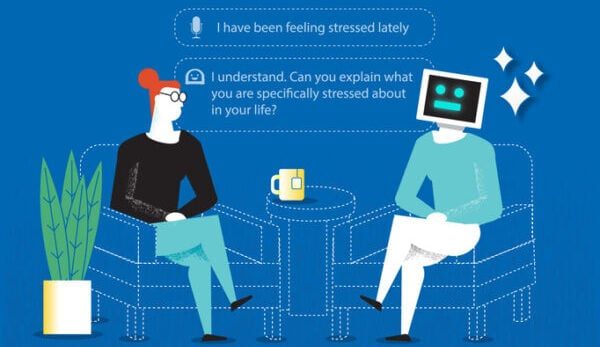Fear Of Suicidal Thoughts
Being afraid that you MIGHT harm yourself or commit suicide even though you have no desire or intention of doing that is a very common fear in our community. Today I was joined by OCD and anxiety specialist Kimberley Quinlan who stopped by the podcast to help me address this scary and sensitive topic that I know is important to many listeners.
Please remember that a podcast is not therapy nor a substitute for therapy or a suitable crisis management tool. If you ever find yourself in a truly dangerous situation, reach out for immediate in-person help.
The Highlights
“I’m thinking about suicide, but I have no intention of harming myself or ending my own life. I do not want to do this, but I am terrified that my thoughts will spiral out of control and I will commit suicide against my will.”
This is a very common fear in our community. It often appears alongside panic disorder, agoraphobia, OCD, and other forms of disordered anxiety.
The idea that one might lose control or “snap” and commit suicide against one’s will is very scary and feels dangerous and urgent. This might include becoming afraid of having medications, weapons, or sharp objects available to you, developing a strong fear of being left alone (nobody will be able to “stop you”), and trying desperately to prove that you won’t harm yourself or are close to help in case you do lose control and suddenly decide to do that.
Types Of Suicidal Ideation
There are different types of suicidal ideation.
Active suicidal ideation involves the desire to end one’s life including actively planning ways to accomplish that goal.
Passive suicidal ideation involves a state of “being done with it all” and entertaining the thought of suicide without actually having a plan or the active intention to harm oneself.
People may experience both types of ideation, AND may also develop the fear of one or both of those types of ideation.
Is It The Thought Or The Reaction To The Thought?
When gripped by the fear of suicidal thoughts and the worry that you might lose control and harm yourself, a clinician may focus on how you are responding to those thoughts. What are you doing? How are you trying to keep yourself safe? How are you trying to “guarantee” that your fear will not come true or overwhelm you and force you to act against your will?
Once you have examined all the ways you’re trying to save yourself from these thoughts and that fear, working on dropping those safety behaviors is the way forward. As usual, the way out of baseless fear is to stop trying to save yourself. You wind up OK, and learn through experience that the fear was in fact baseless and fueled by an anxious mind. While it might seem ridiculous to apply this method to something that seems to scary and important, the fact is that the FEAR of suicidal ideation is a thought like any other and can be approached the same way as other irrational and anxious fears.
Please remember that we are focusing on the fear of suicidal thoughts, not actual active suicidal ideation which would warrant in person intervention. When actively suicidal, we do not ignore that.
Many members of the community are afraid that they will not know if they are simply afraid of suicide, or if they are actively suicidal. The best response to that is that you will know. Suicidal ideation feels quite different than the fear of suicidal ideation. Working overtime to keep yourself self from these thoughts is a key indicator that you are simply afraid of suicidal thoughts.
Fear Of Depression Leading To Suicide
A related fear is the fear of depression or becoming depressed, which might then lead to being suicidal. This often comes down to a fear of being unable to cope, where depression would be a feeling or state that you will not be able to handle. In this situation you may want to find complete assurance that you will not become depressed, but the more effective way to approach this fear is to work on accepting that it is not happening now, and that you will be able to cope even if it does.
The content of these fears seems very important, urgent, and worthy of special attention and action, but this is not true. As scary as the topic may be, understanding that your response to these thoughts and this fear is far more important than the thoughts themselves, disturbing though they may be.
Suicide Prevention Resources
- In the US, emergency help is always available by dialing 911.
- US National Suicide Prevention Hotline: 800-273-8255 (or dial 988 after July 16, 2022)
- Canada Suicide Prevention: 833-456-4566
- UK Suicide Prevention: 0800-689-5652
- Australia Suicide Prevention: 13-11-14
—
This post was previously published on The Anxious Truth.
***
You Might Also Like These From The Good Men Project
 Compliments Men Want to Hear More Often
Compliments Men Want to Hear More Often  Relationships Aren’t Easy, But They’re Worth It
Relationships Aren’t Easy, But They’re Worth It  The One Thing Men Want More Than Sex
The One Thing Men Want More Than Sex  ..A Man’s Kiss Tells You Everything
..A Man’s Kiss Tells You Everything Join The Good Men Project as a Premium Member today.
All Premium Members get to view The Good Men Project with NO ADS.
A $50 annual membership gives you an all access pass. You can be a part of every call, group, class and community.
A $25 annual membership gives you access to one class, one Social Interest group and our online communities.
A $12 annual membership gives you access to our Friday calls with the publisher, our online community.
Register New Account
Log in if you wish to renew an existing subscription.
Username
First Name
Last Name
Password
Password Again
Choose your subscription level
- Yearly - $50.00 - 1 Year
- Monthly - $6.99 - 1 Month
Credit / Debit Card PayPal Choose Your Payment Method
Auto Renew
Subscribe to The Good Men Project Daily Newsletter By completing this registration form, you are also agreeing to our Terms of Service which can be found here.Need more info? A complete list of benefits is here.
—
Photo credit: iStock
The post Fear of Suicidal Thoughts appeared first on The Good Men Project.
Original Article










